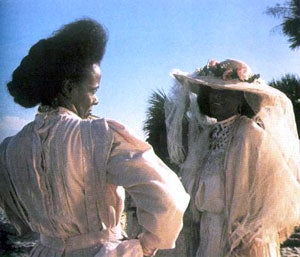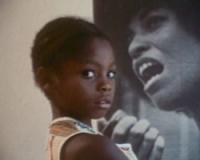As powerful a film in 2011, the 1991 release of Julie Dash’s feature debut Daughters of the Dust was the first cinematic feature by an African American woman to gain a general theatrical release as well as to be accepted within the ranks of the National Film Registry as one of our nation’s cultural treasures. Filmmaker Magazine has ranked the film amidst 50 of the most important independent films made in the 20th century, and it continues to hold a place within history as one of the decisive films that helped to re-envision the definition of African American cinema. Deeply entrenched in African American history with its specific focus on the changing roles of Gullah woman in the face of modernity, Daughters of the Dust is both a tribute to the historical past it depicts as well as a progressive achievement for African American women in film.
Today, a struggle still exists in Hollywood in relation to stories about African American women told by African American women themselves. Dash has certainly paved the way for African American filmmakers who have come after her, both male and female. But with 1991 not being that long ago, and with the noticeable absence of Black women in the larger Hollywood mix as storytellers today, there is certainly an opportunity still to recharge and create new history by doing what Dash did 20 years ago—to boldly create, support and embrace diverse stories that tell diverse truths. Friday night’s screening will give us all the inspiration to do just that.

Julie Dash is widely regarded as the most successful Black female filmmaker in American cinema. Raised in the Queensbridge Projects of Long Island, New York, Dash was introduced to filmmaking in 1968 at a film workshop at the Studio Museum of Harlem. In 1974, she received a BA in film production at New York’s City College, and the following year became a producing and writing fellow at the American Film Institute. In 1986, Dash completed her MFA in film and television production at UCLA. Her first theatrical release was Daughters of the Dust; her recent television work includes Love Song (2000) and The Rosa Parks Story (2002).
The print that will be screened at the Billy Wilder Theater on October 7, 2011 will be a very special experience. This is the first time that a print of Dash’s film has been taken beyond the answer-print stage. That is to say, this 35mm print that will be projected is the first version of the film printed after full-color-correction. While a number of the pieces within the L.A. Rebellion series have been restored by the UCLA Film & Television, Daughters of the Dust is unique in that it is able to present to the audience a brand new element, as fresh as the day it was released, for the opening night of the series.
—Rachel Wilson, Felischa Marye, Jenni Fong and Ariel Schudson






 Mobile Navigation
Mobile Navigation

